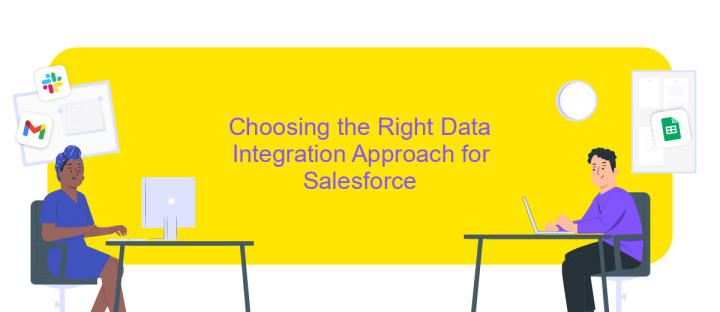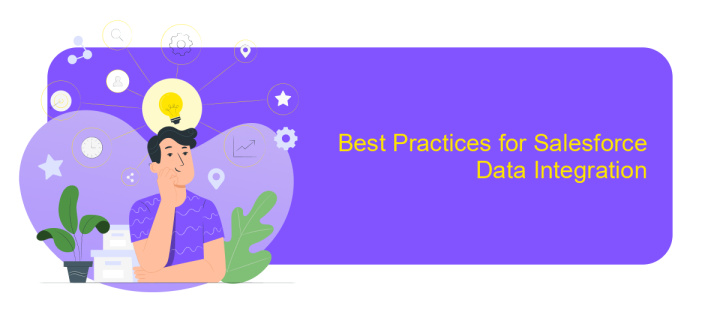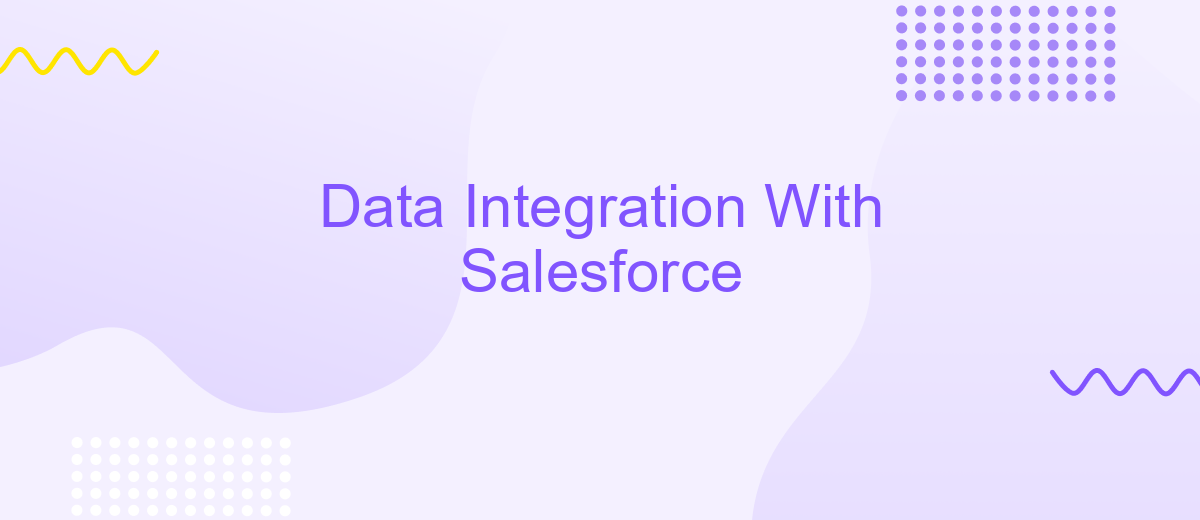Data Integration With Salesforce
In today's rapidly evolving digital landscape, effective data integration is crucial for businesses striving to maintain a competitive edge. Salesforce, a leading customer relationship management platform, offers robust tools for seamless data integration, enabling organizations to unify disparate data sources. This article explores the key strategies and best practices for integrating data with Salesforce, ensuring improved data accuracy, enhanced decision-making, and streamlined operations for businesses of all sizes.
Understanding Salesforce Data Integration
Salesforce data integration is a vital aspect for businesses aiming to streamline their operations and enhance customer relationships. By integrating Salesforce with various data sources, organizations can create a unified view of their customer data, facilitating better decision-making and personalized customer experiences. Understanding the intricacies of Salesforce data integration involves recognizing the different methods and tools available to achieve seamless connectivity.
- APIs: Salesforce provides robust APIs like REST and SOAP, enabling developers to connect external systems and automate data exchange.
- Middleware: Tools such as MuleSoft or Informatica can serve as intermediaries, simplifying complex integrations and ensuring data consistency.
- Data Loader: This tool allows for batch data import and export, making it easier to handle large datasets efficiently.
- AppExchange: A marketplace offering numerous pre-built integration apps to quickly connect Salesforce with other platforms.
Choosing the right integration strategy depends on specific business needs, data volume, and existing IT infrastructure. By leveraging these integration options, companies can ensure their Salesforce data is accurate, up-to-date, and accessible across all departments, ultimately driving improved business outcomes and customer satisfaction.
Methods of Salesforce Data Integration

Salesforce data integration can be accomplished through various methods, each tailored to specific business needs and technical environments. One popular approach is using Application Programming Interfaces (APIs), which allow seamless communication between Salesforce and other applications. REST and SOAP APIs are commonly used to facilitate real-time data exchange, ensuring that information is consistently updated across platforms. Additionally, Salesforce Connect enables integration with external data sources without the need for data replication, providing a real-time view of data stored outside Salesforce.
Another effective method involves using third-party integration platforms such as ApiX-Drive. These platforms offer pre-built connectors and automation tools that simplify the integration process, reducing the need for extensive coding or technical expertise. ApiX-Drive, for example, allows users to set up data workflows between Salesforce and numerous other applications, streamlining operations and enhancing productivity. These integration services provide customizable solutions that cater to unique business requirements, ensuring that data flows smoothly and efficiently across systems, ultimately supporting informed decision-making and improved customer engagement.
Choosing the Right Data Integration Approach for Salesforce

When integrating data with Salesforce, selecting the right approach is crucial for ensuring seamless data flow and system efficiency. The choice depends on various factors, including the complexity of data, the frequency of data updates, and the existing technology stack. Understanding your organization's specific needs and constraints will guide you toward the most suitable integration method.
- Batch Data Integration: Ideal for large volumes of data that do not require real-time processing. This method is cost-effective and suitable for periodic updates, such as daily or weekly data syncs.
- Real-Time Data Integration: Best for scenarios where immediate data updates are critical. This approach supports instant data synchronization, enhancing decision-making and customer interactions.
- Hybrid Integration: Combines batch and real-time methods to balance performance and cost. This is beneficial for organizations needing both immediate insights and regular data consolidation.
Ultimately, the right data integration strategy aligns with your business objectives, technical capabilities, and budgetary constraints. Evaluating these factors thoroughly will ensure that your Salesforce integration is efficient, scalable, and capable of meeting your evolving data needs.
Best Practices for Salesforce Data Integration

Integrating data with Salesforce can significantly enhance business operations by providing a unified view of customer information. To ensure successful integration, it is essential to follow best practices that optimize data flow and maintain data quality. Establishing a clear integration strategy is the first step towards achieving seamless data synchronization.
Understanding the data landscape is crucial. Identify the data sources, their structure, and how they relate to Salesforce objects. This knowledge aids in mapping data accurately and selecting the right integration tools. Additionally, consider data volume, frequency, and latency requirements to ensure the integration solution meets business needs.
- Leverage Salesforce's native integration tools like MuleSoft and Data Loader for efficient data handling.
- Implement robust data governance policies to maintain data accuracy and security.
- Use APIs to enable real-time data exchange and minimize latency issues.
- Regularly monitor and audit data integration processes to identify and resolve any discrepancies.
Finally, collaboration between IT and business teams is vital for successful data integration. Continuous communication ensures alignment with business objectives and quick resolution of any issues. By adhering to these best practices, organizations can maximize the value of their Salesforce investment and drive better business outcomes.


Future Trends in Salesforce Data Integration
As Salesforce continues to evolve, the future of data integration is set to be shaped by advancements in automation and artificial intelligence. These technologies will enable more seamless and efficient data integration processes, reducing the need for manual intervention. Tools like ApiX-Drive are at the forefront, offering automated solutions that simplify the integration of Salesforce with various platforms, ensuring real-time data synchronization and enhanced data accuracy. This trend towards automation is expected to grow, allowing businesses to focus more on strategic decision-making rather than operational data handling.
Moreover, the rise of low-code and no-code platforms is democratizing data integration, making it accessible to non-technical users. This shift is empowering more stakeholders within organizations to participate in the integration process, fostering innovation and agility. As organizations increasingly rely on data-driven insights, the demand for robust and flexible integration solutions like those provided by ApiX-Drive will continue to rise. In the future, we can expect Salesforce data integration to become even more intuitive, scalable, and secure, driven by these emerging trends and technologies.
FAQ
What is data integration with Salesforce?
What are the common methods for integrating data with Salesforce?
How can I automate data integration processes with Salesforce?
What are the benefits of integrating external data with Salesforce?
How do I ensure data security during integration with Salesforce?
Apix-Drive is a universal tool that will quickly streamline any workflow, freeing you from routine and possible financial losses. Try ApiX-Drive in action and see how useful it is for you personally. In the meantime, when you are setting up connections between systems, think about where you are investing your free time, because now you will have much more of it.

